- Home
- Conn Iggulden
The Dangerous Book of Heroes Page 23
The Dangerous Book of Heroes Read online
Page 23
Morgan stayed in the battered city for twenty days, removing everything of value and taking three thousand hostages for ransom. His men tortured some to find the location of their treasures, and Morgan was later criticized, though his officers were adamant that he was not responsible for the worst excesses of his men.
In February he and his men began the march back to Chagres. On the way he searched his prisoners and men for hidden loot. He even took his men’s muskets apart to check that they had not stuffed jewels into the barrels. This engendered much ill feeling toward him, but Morgan was not a man to let that sort of thing trouble him.
Copyright © 2009 by Graeme Neil Reid
When they returned to Chagres, Morgan announced to his men that the final division of spoils was only twenty pounds a head. Many of them were furious, and he lost a number of loyal captains. He returned to Jamaica with only eight ships but almost all of the plunder. In all, he brought back some £237,000 in gold as well as silk, silver plate, jewels, and lace to a similar value. In today’s terms, that would be more than £100 million. It was Morgan’s greatest success, but his troubles were just beginning.
As news spread of the attack on Panama, Governor Modyford found himself facing serious difficulties. The sack of the city had taken place during peace with Spain, and the Spanish court made angry demands for punishment of those involved. A new governor, Thomas Lynch, was appointed, and when he arrived in Jamaica, he moved quickly. Modyford was invited on board Lynch’s ship and then told he was a prisoner and would be sent home in disgrace. Lynch also began to gather information on Henry Morgan and looked over the records of all the ships involved in the sack of Panama. At the same time he began to get reports of Spanish attacks on British territories in reprisal. He was in the same position as Modyford had been. Lynch had absolute authority in Jamaica but needed force and ships to impose it. Worse, war with Holland looked likely once again, and Lynch had to try to appease the Spanish. He had enough cause to arrest Morgan but resisted for a time, worried that such an act would send the privateers sailing away to Tortuga.
In London there were mixed feelings about the attack on Panama. Spain was an ancient enemy, and as one royal councillor said: “Such an action had not been done since the famous Drake.”
Modyford was imprisoned in the Tower of London, where he remained for two years before being released. He would later return to Jamaica, where he would become chief justice.
In 1672, Morgan was finally taken “as his Majesty’s prisoner.” He sailed home in the frigate Welcome, accompanied by another privateer captain who had already been sentenced to death for piracy. His hopes depended on being able to convince the king that he had not known of the peace with Spain when he set sail.
He need not have worried. At home, his explanation was accepted and it was not long before he was advising the king. War with the Dutch broke out in 1672, and Morgan put forward plans to fortify Jamaica. In 1674 he was appointed deputy governor.
When Governor Lynch heard of Morgan’s easy treatment, he was considerably vexed. His own commission as military commander in Jamaica was revoked, and to his fury, Morgan was granted the same powers and knighted. The war with the Dutch came to an abrupt end in 1674, and in 1675 Morgan left England for Jamaica once more in triumph. Modyford returned at around the same time, and they met with great pleasure in their old haunt.
At the first meeting of the council, Morgan had the document revoking Lynch’s powers read aloud in Lynch’s presence. He enjoyed confounding the man who had imprisoned Modyford and himself. He also appointed himself as part of a committee to audit Lynch’s handling of the stores and munitions on Jamaica. Carelessly, he had made himself a dangerous enemy.
Morgan’s position as a wolf in the sheepfold of power was always going to be difficult. When the new governor, Lord Vaughan, ordered him to punish privateer captains, Morgan chose to advise his old friends how to escape. He also used the governor’s authority and name freely in letters to privateers, telling them to regard Jamaica as a safe port. When one of the letters turned up, Lord Vaughan brought charges against Morgan and Modyford.
In Lynch, Lord Vaughan found a stalwart supporter. Lynch described Morgan as a man of “violent humours” and alleged that Morgan had challenged two other members of the Jamaica council to duels. Slowly, the atmosphere of the council became poisoned, with many accusations of theft, piracy, and corruption, until Lord Vaughan finally dissolved it.
In England, the charges Vaughan had made against Morgan and Modyford dragged through hearings with the Lords of Trade. Eventually, they decided the job was clearly too much for Lord Vaughan. He was recalled after just two years in Jamaica and replaced by the Earl of Carlisle. At the same time, Henry Morgan was confirmed in his post as deputy governor to the incoming earl and as commander in chief of all military forces.
Morgan did not sit idle waiting for the Earl of Carlisle. As soon as Vaughan set sail, he ordered new fortifications and increased the guns defending the port from sixty to more than a hundred. He received news of war with France and doubled the guard on Port Royal against possible attacks. His fabled luck struck again with news that the flagship of a French war fleet had run aground on its way to the Caribbean. When its captain had fired guns in a distress signal, the other ships thought it was a command to come closer and ran aground on the same rocks. The French lost ten ships in the chaos, and their threat was severely diminished in the Caribbean.
When Lord Carlisle arrived, he was very pleased with the fortified port and praised Morgan in letters home. His relationship with Morgan would always be cordial, though it was not always so with the council. Still, it was a happy time for Henry Morgan, until Lord Carlisle finally left the post in 1680.
Spanish ships continued to attack anything flying an English flag and were themselves attacked by privateers. Panama was even assaulted once more by captains who had been on the original journey with Morgan. Pirates infested Caribbean waters, beyond anyone’s control. Morgan captured some of his old allies when they turned pirate but tried to prevent them being executed. Their death warrant was confirmed in London by a privy council growing increasingly wary of the powers being exercised in Jamaica. They lost faith that Morgan was sufficiently ruthless with the pirates, and to Morgan’s horror, they appointed none other than Thomas Lynch as the new governor in Jamaica. Restored to power, the man Morgan had once humiliated would be a thorn in his side.
When Lynch returned to Jamaica in 1682, Morgan was forced to surrender his offices, which he did with strained good humor. He was still a member of the Jamaica council, but Lynch made it clear that he regarded him as a ruffian and a rogue, without a redeeming feature.
Lynch’s chance came when a brawl in Port Royal was referred to Morgan. Lynch ordered a full investigation and found that Morgan’s account of the brawl differed from others. It was a small thing, but Lynch leaped on it, making an official complaint that Morgan was not fit for his duties. Lynch managed to have Morgan dismissed from the council in 1683. The governor’s version of events reached London first, and the dismissal was confirmed by the Lords of Trade.
Morgan tried to fight the decision, but his petition fell on deaf ears in London and he retired to his estates in Jamaica, putting on a great deal of weight and drinking himself insensible. Thomas Lynch did not have much time to enjoy his triumph, however. In that hot climate, death was always close, and he succumbed to fevers in 1684.
Morgan was not left in peace for long. A colorful account of his career was published in a Dutch book, The American Sea-Rovers. Morgan successfully sued the publisher for libel, but the book made him famous as a bloodthirsty pirate.
Charles II died in 1685, and with that, much of the force behind Morgan’s disgrace dwindled. A new governor reversed Morgan’s ban from the council and restored him to public favor. Yet Morgan’s health had suffered, and at fifty-three, he was old before his time. He died on August 25, 1688, leaving the bulk of his vast estates to his beloved wife, Mary. He i
s buried in Port Royal, Jamaica, though his grave was later obliterated and lost in the earthquake of 1692. Even the earth couldn’t hold him.
Though he died without sons of his own, he left part of his fortune to his brother-in-law Robert Bindloss, and his heirs, on the condition that they took the name Morgan. One of those renamed heirs became attorney general and another crown solicitor for Jamaica. Henry Morgan would have loved to see that.
After Morgan’s death, it was said of him: “He showed the world that he was qualified to govern as well as fight, and that in all stations of life he was a great man.” His talent for organizing the collection of rugged individuals that were the Jamaica privateers was extraordinary, his charisma beyond dispute. Henry Morgan was a knight and a politician, a ruffian and a pirate. He dragged himself up from humble beginnings to become one of the most powerful and respected men in the Caribbean. He was without doubt a ruthless devil when he needed to be. However, it is worth pointing out that empires are never built by vicars. They are built by men like Henry Morgan.
Recommended
The Life of Sir Henry Morgan by E. A. Cruikshank
Admiral Sir Henry Morgan: King of the Buccaneers by Terry Breverton
Lawrence of Arabia
All men dream, but not equally. Those who dream by night in the dusty recesses of their minds wake in the day to find that it was a vanity. But the dreamers of the day are dangerous men, for they may act their dreams with open eyes to make it possible. This, I did.
—T. E. Lawrence
Thomas Edward Lawrence was a soldier, archaeologist, writer, intelligence officer, and international negotiator. During his life he was known variously as “Emir Dynamite,” the last great crusader, the most interesting Briton alive, “el Lawrence,” “the Uncrowned King of Arabia,” and, simply, “Lurens.” He was enigmatic, asexual, masochistic, retiring, exhibitionistic, difficult, and charming—an extremely complex man whose life and personality still hold mystery today.
Born in 1888, he was the second of five illegitimate sons of Thomas Chapman and nursery governess Sarah Junner. Chapman gave most of his money to his wife and children, eloped with Sarah, and changed their names to Lawrence. From then on, he and Sarah lived as husband and wife. Chapman inherited a baronetcy in 1914; officially he was Sir Thomas, but he never used the title. He died in the influenza epidemic of 1919, and Sarah went to China with Lawrence’s missionary brother, Montague. By then, the name of Lawrence was already world-famous through his exploits in Arabia.
After winning a scholarship to Jesus College, Oxford, Lawrence refused to play organized sports there. Instead, he walked, ran, cycled, and swam. He became an excellent pistol shot and joined the Officers’ Training Corps. He was quietly rebellious, independent, and physically tough. Several times he broke through the winter ice to swim the Cherwell River and was famous as one of the illegal night climbers on the university roofs. To complete his history degree he spent a summer walking and camel riding eleven hundred miles through Syria, studying the old Crusader castles.
He divided the next four years of his life between Oxford and the ancient biblical city of Carchemish, excavating with archaeologist Leonard Woolley. Lawrence took to wearing around his waist the Arabian red tasseled belt of the permanent bachelor. There he and the famous Arabian scholar Gertrude Bell met for the first time, though they were not taken with each other. Their love and concern for Arabia and its peoples grew separately.
During those years of archaeological digs, academic reports, and theses for Oxford University, Lawrence learned to speak the Arabic of the bazaars as well as to read and write basic script. From 1300, the Middle East had been part of the Ottoman Empire, the realm of the Turks stretching from Europe to the Persian Gulf, and so Lawrence learned also the ways of the Turks. He was not impressed. He and his Syrian friend Daouhm were arrested and beaten by the Turks in 1912 as suspected deserters from the Turkish army.
When the First World War began in August 1914, Turkey entered in November as an ally of Germany and the Austro-Hungarian Empire. Twenty-six-year-old Lawrence was posted to Cairo as an intelligence officer in the small British army holding the vital Suez Canal. He was made lieutenant and his work involved drawing and correcting maps of the Middle East. As his Oxford lecturers had before, High Command found him difficult.
The Arab Revolt began on June 6, 1916, when Princes Faisal and Ali of southern Arabia attempted to take the holy city of Medina. They were defeated by heavy Turkish artillery fire. In punishment for the attack, the Turkish commander ordered that all Arabs living in Awali be massacred. Those dead and alive were thrown onto their burning homes.
In Mecca on June 10, Faisal’s father, Sharif Husayn Ibn ‘Ali, fired from his window to signal the official revolt. The Turks, also Muslim, attempted a worldwide jihad to include Britain, France, and Russia, but Husayn refused to sanction this and instead wanted the Turks out of Arabia. Husayn supported Great Britain—but not France—and Britain in turn supported the Arab Revolt against their common enemy, the Turks. In June three British ships steamed into Jeddah on the Red Sea with food, three thousand rifles, and ammunition. In July, the Turks garrisoning at Mecca were defeated, the first victory of the desert revolt.
Britain’s intelligence chief and instigator and supporter of the Arab Revolt was Ronald Storrs, and on his visits to Jeddah and Hamra he took Lawrence. They met all of Husayn’s sons and agreed that the most likely to succeed in coordinating an Arab regular force were Faisal and Abdullah. Lawrence became the first British officer Husayn allowed to visit the fighting tribes. He met Prince Faisal so many times that Faisal asked him to wear Arab dress to be less conspicuous. Faisal provided him with the white robes of a Hashemite prince, and the legend of “Lawrence of Arabia” began.
In late 1916, Lawrence was appointed military adviser to the Arab Revolt with orders to report and liaise whenever necessary between Arabia and Cairo. He wrote: “The position I have is a queer one. I do not suppose any Englishman before ever had such a place.” Faisal presented Lawrence with a British rifle captured by the Turks at Gallipoli, an earlier Turkish gift to Faisal. It was a gesture of friendship, humor, and trust.
Copyright © 2009 by Graeme Neil Reid
Supplies from Britain were trickling through, and it was time for Faisal’s regulars and Lawrence’s irregulars to campaign. Yenbo on the Red Sea was saved from a Turkish night attack almost without a shot being fired—the only land approach was lit by Royal Navy searchlights, and the Turks retreated. That success was followed by a joint advance by land and sea on Wejh. In January 1917 Wejh fell to the Royal Navy and Arab regulars as Lawrence and Faisal approached by camel over land. The only Red Sea port then left to the Turks was Aqaba. In the east the British liberated Baghdad in March.
Lawrence initiated guerrilla attacks on the north-south railway from Damascus to Medina, a tactic continued throughout the war by Arab irregulars trained by British explosives experts. The wrecks of the engines are there today, lying on their rusted sides in the desert. Harassing rather than decisive, those attacks kept the Arab Revolt active and were ideal for mobile irregulars. That June, Lawrence trekked some 560 miles by camel through enemy Syria, converting tribes to the revolt, patching up tribal feuds and religious differences, and assuring them of British support if they fought.
Back in the south again, Lawrence, the formidable Auda abu Tayi of the Howeitat tribe, and some thirty-five others quietly left Wejh. They rode a circular route, skirting the great Nefud Desert and crossing a plateau to arrive at the valleys behind Aqaba. On their camels were weapons and gold to raise the local tribes.
Copyright © 2009 by Graeme Neil Reid
The Turkish forts forming the inland defensive line were taken one by one. In one charge to cut off a Turkish retreat, Lawrence excitedly fired his revolver and killed his own camel. On July 6, Aqaba was liberated by Lawrence’s irregulars.
Lawrence crossed the Sinai Desert by camel to take the news to Cairo, and a week later a British s
hip arrived at Aqaba with food and gold. Rifles, mortars, machine guns, and explosives followed. The revolt was going well, the Turks were being stretched, and at headquarters, General Allenby took command for the British advance northward. Yet there were failures among the successes. The Turks were tough soldiers and able to survive on poor rations and in the most hostile of terrains. It was apparent that the liberation of Arabia would be hard-fought.
Deserts are not only rock, sand, and sun; they are also hills, mountains, valleys, and snow. The desert war for Lawrence and his Arab irregulars continued through the winter. They campaigned in rain and mud, forced their unwilling camels through snow-drifts, and scaled ice-covered hills in sandals and bare feet. There were many bitter moments. Of a badly wounded friend, Lawrence wrote: “We could not leave him where he was, to the Turks, because we had seen them burn alive our hapless wounded. For this reason we were all agreed, before action, to finish off one another, if badly hurt; but I had never thought it might fall to me to kill Farraj.”
Copyright © 2009 by Graeme Neil Reid
Deep in Turkish territory lay Dara’a, a vital railway junction where the line from the coast joined the north-south line. In the rainy November of 1917, Lawrence, dressed as an Arab, entered the town to study the layout for a future attack. According to his book Seven Pillars of Wisdom, he was captured and viciously beaten by Turkish soldiers before he could escape. For many years this episode has been questioned by historians; Lawrence did not report his capture at the time, and the exact details cannot be known. Possibly, it was an echo of his beating in 1912 with Daouhm. Lawrence was certainly under considerable strain for a long period. He suffered regularly from dysentery and fevers, yet continued to make many long and important camel journeys through the deserts.

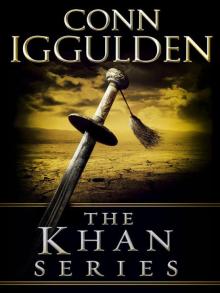 The Khan Series 5-Book Bundle
The Khan Series 5-Book Bundle Tollins 2: Dynamite Tales
Tollins 2: Dynamite Tales Tollins: Explosive Tales for Children
Tollins: Explosive Tales for Children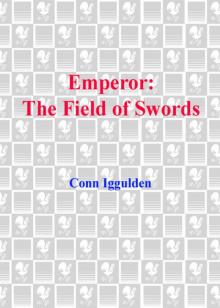 The Field of Swords
The Field of Swords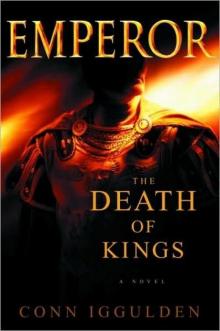 The Death of Kings
The Death of Kings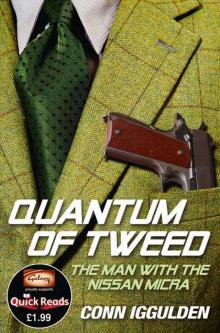 Quantum of Tweed: The Man With the Nissan Micra
Quantum of Tweed: The Man With the Nissan Micra Bones of the Hills
Bones of the Hills Genghis: Birth of an Empire
Genghis: Birth of an Empire The Gates of Rome
The Gates of Rome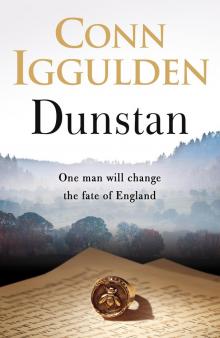 Dunstan
Dunstan Fig Tree
Fig Tree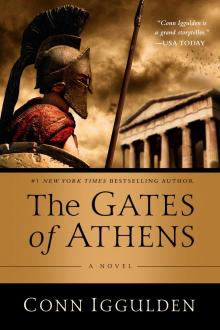 The Gates of Athens
The Gates of Athens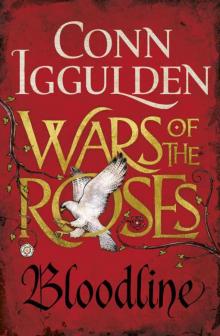 Stormbird
Stormbird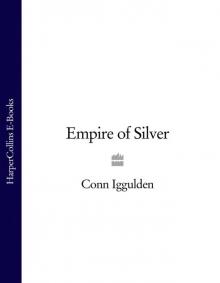 Khan: Empire of Silver
Khan: Empire of Silver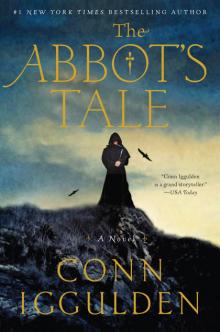 The Abbot's Tale
The Abbot's Tale Gengis: Lords of the Bow
Gengis: Lords of the Bow The Gods of War
The Gods of War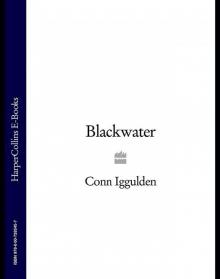 Blackwater
Blackwater Ravenspur: Rise of the Tudors
Ravenspur: Rise of the Tudors Wars of the Roses: Trinity (War of the Roses Book 2)
Wars of the Roses: Trinity (War of the Roses Book 2)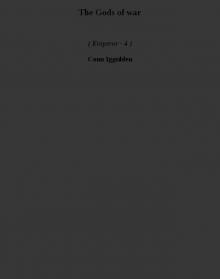 The Gods of war e-4
The Gods of war e-4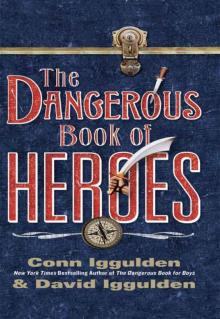 The Dangerous Book of Heroes
The Dangerous Book of Heroes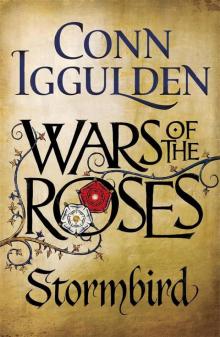 Stormbird wotr-1
Stormbird wotr-1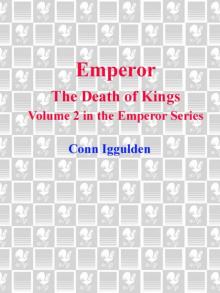 Emperor: The Death of Kings
Emperor: The Death of Kings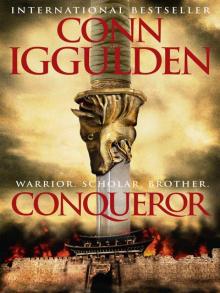 Conqueror (2011) c-5
Conqueror (2011) c-5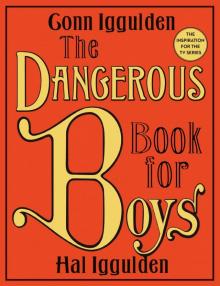 The Dangerous Book for Boys
The Dangerous Book for Boys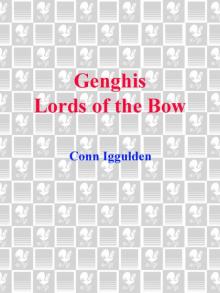 Genghis Lords of the Bow
Genghis Lords of the Bow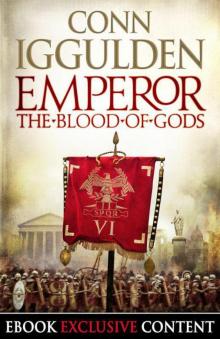 Emperor: The Blood of Gods (Special Edition) (Emperor Series, Book 5)
Emperor: The Blood of Gods (Special Edition) (Emperor Series, Book 5)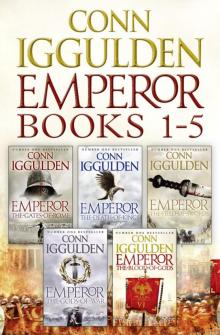 The Emperor Series: Books 1-5
The Emperor Series: Books 1-5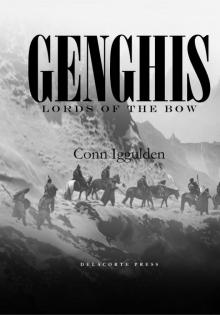 Lords of the Bow c-2
Lords of the Bow c-2 Lords of the Bow
Lords of the Bow Quantum of Tweed
Quantum of Tweed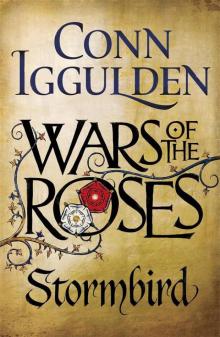 Wars of the Roses 01 - Stormbird
Wars of the Roses 01 - Stormbird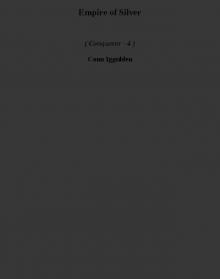 Empire of Silver c-4
Empire of Silver c-4 Birth of an Empire
Birth of an Empire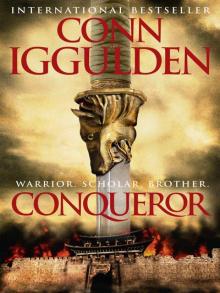 Conqueror (2011)
Conqueror (2011)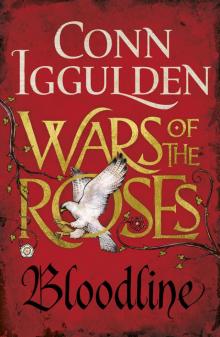 Wars of the Roses: Bloodline: Book 3 (The Wars of the Roses)
Wars of the Roses: Bloodline: Book 3 (The Wars of the Roses) Bones Of the Hills c-3
Bones Of the Hills c-3 Empire of Silver
Empire of Silver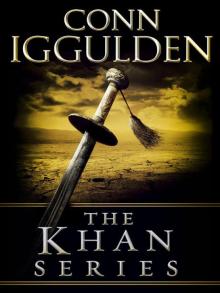 The Khan Series 5-Book Bundle: Genghis: Birth of an Empire, Genghis: Bones of the Hills, Genghis: Lords of the Bow, Khan: Empire of Silver, Conqueror
The Khan Series 5-Book Bundle: Genghis: Birth of an Empire, Genghis: Bones of the Hills, Genghis: Lords of the Bow, Khan: Empire of Silver, Conqueror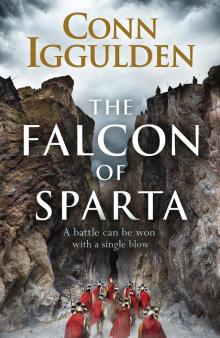 The Falcon of Sparta
The Falcon of Sparta Explosive Tales for Children
Explosive Tales for Children